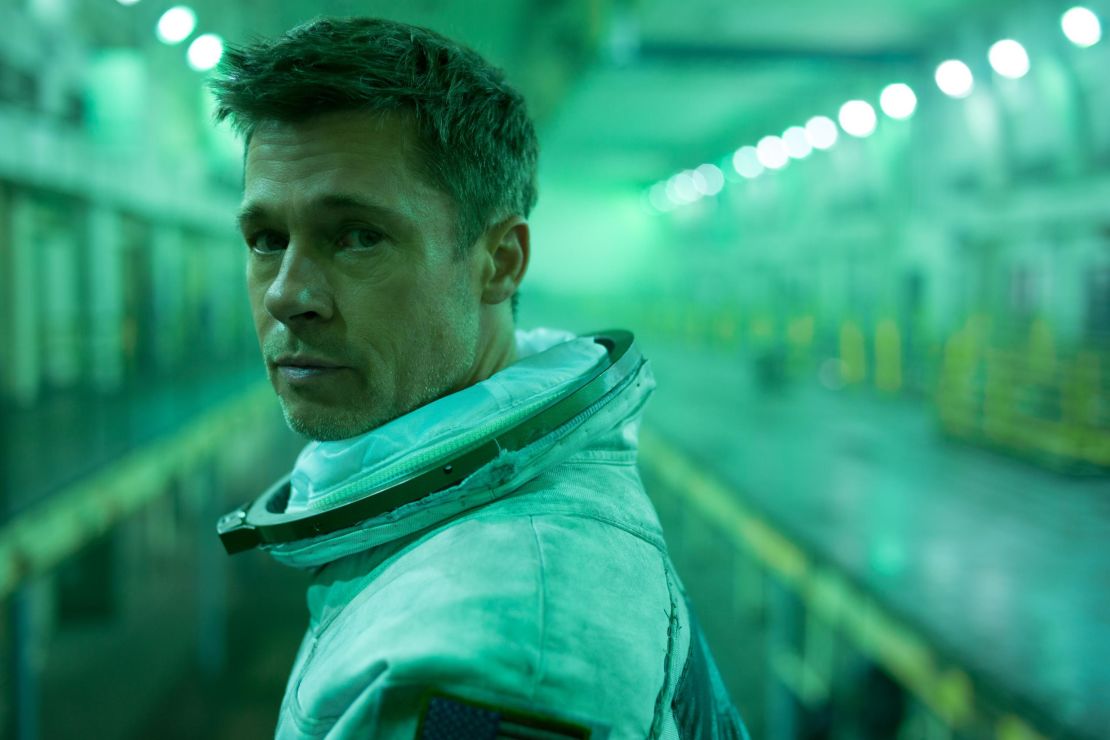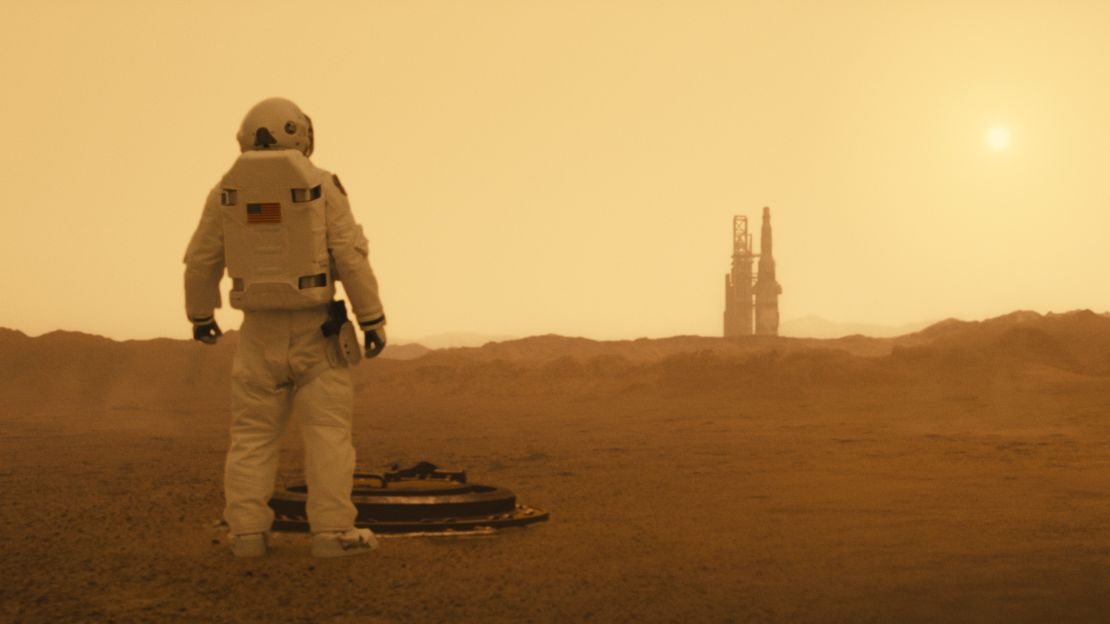“I’m sorry to get sententious on you,” James Gray says around the midpoint of our interview. The director of “Ad Astra” is apologizing for keeping things highbrow, which is no reason to apologize at all.
Gray has been arguing astronauts are bad at talking about the wonders of space travel. His theory is that art gets the metaphysics of space in a way that many who’ve been there cannot express. He’s moved through a decent Neil Armstrong impression, “The Empire Strikes Back” and Vermeer, and now he’d like to stir Japanese printmaker Hokusai into the mix. Gray paraphrases a quote from the artist, about art and age’s ability to distill the vast scope of life with simple expressions, steering himself back on course.
Talking with the director it’s clear each answer starts with its destination way out of sight. Some tie off neatly, others trail off in a semi-rhetorical “Am I making any sense?” Either way, it’s a journey packed with big ideas and lashings of introspection.
Anyone who has watched a Gray movie, which he writes or co-writes as well as directs, will know this extends to his filmmaking. It’s why the American has become known as a director’s director; one who attracts big-name actors looking to him to coax out career-best performances.
Gray’s last movie, 2016’s “The Lost City of Z,” was a reflective character study that sent real-life British explorer Percy Fawcett (Charlie Hunnam) into deepest Amazonia on a quest which consumed body and soul. Now he has returned to fire Brad Pitt into the cosmos on much the same trajectory.

“Ad Astra,” Gray’s seventh feature, sees the director handed a significantly larger budget than usual to realize his ambitious near-future sci-fi thriller. Pitt, Gray’s friend and producing partner, leads as Roy McBride, an astronaut following in the footsteps of his missing-presumed-dead father (Tommy Lee Jones). After a burst of cosmic rays from deep space threatens life on Earth, Roy must venture to the outer reaches of the solar system to find the source, where clues about his father’s disappearance may also lie.
Reviews out of the Venice Film Festival compared it to well-worn sci-fi touchstones “2001: A Space Odyssey” and “Solaris,” and “Apocalypse Now,” in part due to its probing adventure narrative. Gray says he went straight to the urtext that inspired them, Homer’s epic poem “The Odyssey.”
“The whole M.O. originally was ‘The Odyssey’ from Telemachus’ point of view,” he explains. “His father, Odysseus, goes away for 20 years and disappeared. He would have to reconcile with that.”
Pitt as a modern Telemachus is a wounded figure beneath a composed surface. He’s famed in the astronaut corps for having a pulse that has never crept above 80 bpm. And yet something stirs in Roy when his father lurches back onto the radar. The memory of his father, which Roy has shored against his ruins, is tested, sending the son into an existential tailspin.
“I kind of believe that true terra incognita is the human soul,” Gray says, citing author Kurt Vonnegut. “When you talk about the soul, you’re really talking about the conscious, the unconscious, the subconscious… it’s almost like a series of layers. You keep peeling the layers, but you can never get to the center.
“That was what we were trying to delve into in the movie,” he says, “(to) get to a place of tremendous intimacy where we would use a lot of extreme close ups, where you would hear (Roy’s) inner monologue – which sometimes would be different from how he’s acting outwardly. That we would have access into who this guy was and who he wanted to be, and how he was lying to the rest of the world. We found that interesting; much more than spaceships.”
That said, Gray and production designer Kevin Thompson’s imagining of the solar system, its spacecraft and stations, is interesting. Mars hosts a US military base. The moon is passé; at an outpost, fast food chains flash familiar neon signs, while the ungovernable far side is a wild west of untapped resources fought over by space pirates.
“It’s not that I’m trying to say that the future will suck,” Gray says, “I’m trying to say that that’s where we are now.” From the moon’s large quantities of Helium-3 (touted as a potential source of safer nuclear energy) to the processed food currently eaten by astronauts, “what you’re seeing is really our attempt to translate very clearly the science and facts on the ground.”

In this regard, “Ad Astra” follows in the footsteps of “2001” with its thread of “future-fact” science (Kubrick had Pan Am running charter flights to space, Gray has Virgin Atlantic). But for all the contemporary references, there’s a timeless quality to Gray’s narrative. The film has a Latin title (“ad astra” means “to the stars”), a Homer-inspired jumping off point and Roy muttering Old Testament verse at one stage. So what’s the value of Classics in space?
“The simplicity and the beauty of myth (is it) has such a hold on us; such power,” Gray says. “And there’s a reason it does. It’s elemental and direct.”
He lists the assumptions an audience could build from a snapshot of our own conversation. “If you’re making a science fiction movie, they (the audience) can’t have any of those assumptions. You’re creating an entire world,” he says. “So, then you have to hang your clothes on a clothesline that has a very simple mythic through-line.”
“Telemachus looking for Odysseus was our through-line,” he adds. “That enabled all the exposition, expatiation – whatever word you want to us – about this near-future world. It gave it room to breathe.”
One question that’s been around since the time of Ancient Greece is whether we’re alone in the universe. “Ad Astra” wrestles with it too (although it would be egregious to spoil the film’s answer). Gray is clear in his own beliefs.
“I don’t think there’s anything out there,” he says. “If there is it’s far; so far we’ll never get there, or we can’t communicate with it. Now if we are by ourselves, is that a bad thing? Some people think it is. My own view is it’s not so bad.”

He tells a story from post-production. Gray was at home dealing with visual effect headaches when his 9-year-old son dragged him away to look at a praying mantis outside.
“It was the greatest thing ever,” he says, “that my son could find the beauty in that. I had all this neurosis and stress … and he’s telling me to look at this thing.”
“Directing our attention towards little green men out there is a fool’s errand,” the director adds. “The idea is to focus on the here, the now, the present, the interconnectivity. It seems to me that that’s everything. I just feel like that’s philosophically where I’m at.”
We finish by discussing how space movies have changed tonally in recent years, drifting through “The Right Stuff,” dark matter and the relative merits of future space exploration (“if the ambition is going to be space tourism … then I have a little bit more fear for the species.”).
“It’s maybe the first (space) movie to be partially shot on location,” Gray offers out the blue. It turns out “Ad Astra’s” production was able to integrate into the film high-resolution images taken by rovers of the real moon and Martian surfaces.
“You know, Kubrick, when he did ’2001’, that doesn’t look anything like the lunar surface. He got it quite wrong. Now that’s ok, he got virtually everything else right,” the director says.
“We had the advantage of having the actual photographs. So the movie’s not as good, but at least I have that on Mr. Kubrick.”
“Ad Astra” is released in the UK on September 18 and in the US on September 20.

